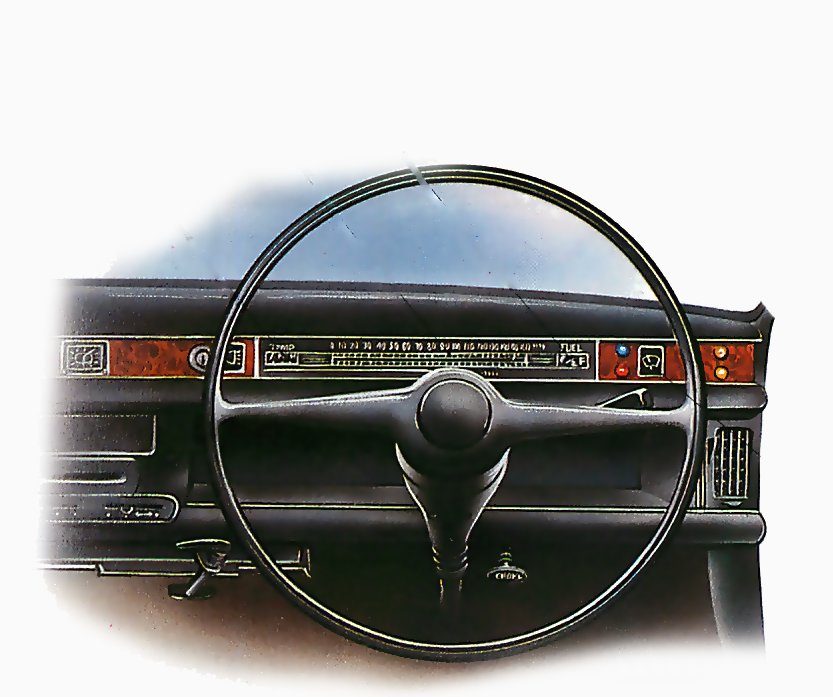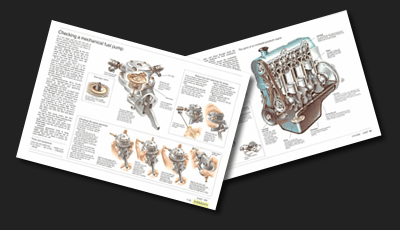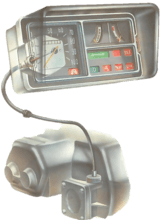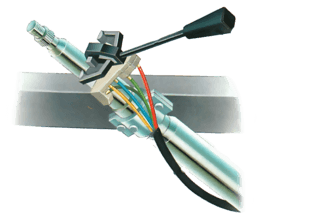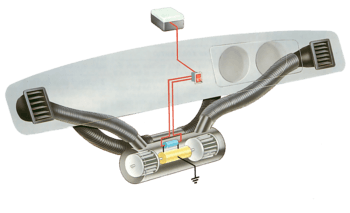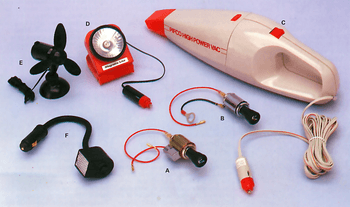This article is from the mid-1980s. It is out-of-date but still interesting.
Twenty-five years ago dashboards were made of wood veneer or painted pressed-steel. On all but top-of-the-range models, the instruments consisted of just a speedometer, fuel and temperature gauges and an ammeter.
On most cars, warning lights consisted of ignition, main beam, low oil pressure and indicators. The gauges were analogue, usually with a needle and dial, and the warning lights were simply small electric bulbs mounted behind a coloured plastic or glass cover.
This video course is the best way to learn everything about cars.
Three hours of instruction available right now, and many more hours in production.
- 4K HD with full subtitles
- Complete disassembly of a sports car
Changes
On a modern car, the dashboard is made from moulded plastic, often as a one-piece unit with all the necessary spaces and ducts for the heating system, instruments, radio-cassette units and speakers. Moulded plastic gives the car designer much greater freedom in dashboard styling, both for driver safety and customer appeal.
But the greatest change is in the range of instruments you can find on a car nowadays, and the way in which they are displayed.
As well as those on a car from 25 years ago (except the ammeter has now largely been replaced by the voltmeter or battery condition indicator) modern top-of-the-range models often have a variety of warning lights and checks to monitor the car's various systems.
Warnings
Audi electronic check
Top-of-the-range Audis have an electronic check system that automatically monitors various systems.
When the check system detects a serious fault, such as loss of engine oil pressure, it displays the oil-pressure symbol on a red background and sounds warning chimes to alert the driver to the danger.
A more minor fault, such as low washer fluid, is displayed on a yellow background to show that it is less serious.
The driver can run the auto-check system by pressing the check button. If all is well, the system lights up 'OK'.
Depending on the model there may be additional warning lights to tell you that the handbrake is on, that the doors are not closed properly, that one of the brake lights has failed and that the seat belts are not fastened properly.
Early versions of the seat belt warning light would come on irrespective of whether or not someone was sitting in the passenger seat. This problem has now been overcome by fitting a weight-sensitive sensor to the passenger seat. If no one is sitting in the seat, the sensor breaks the circuit to the warning light to stop it coming on.
Other warning lights are concerned with service aspects of the car, for example, to tell you that your brake pads are wearing down or that the brake fluid level needs topping up.
How the brake system warnings work
The brake pad warning system has a sensor consisting of one or two wires embedded in the pad. These wires are connected to the electrical circuit for the warning system.
When the pad wears down to a certain level, the action of braking causes the brake disc to touch the wires, completing the electrical circuit and causing the warning light to come on on the dash. There are several different ways in which the brake fluid level warning light can work.
One common system has a float built into the cap of the brake fluid reservoir. When the fluid level is high, the float breaks the circuit to the warning light but, as fluid level drops, the float falls with it. When the float reaches a certain depth, it completes the circuit and triggers off the alarm.
BMW have taken the warning lights system a stage further and developed a system that tells the driver when the car is due for a service. A computer monitors information such as mileage and number of hours the car has been driven since the last service, and combines this with information such as road speed and number of gear changes to work out when the car is due for a service.
Electronic dashes
The dash from the Rover CCV (Coupe Concept Vehicle) shows how clear electronic dashboard instruments can be.
Much of the information that a modern dashboard can give the driver has been made possible by the electronics revolution over the past ten years or so. Electronics has also influenced dashboard displays.
Many cars now have digital speedometers that display their information either as a changing figure or as a diagram, showing the engine speed climbing up a graph as it rises. Once you are used to this sort of display, it is very easy to register the figure for the car's speed, instead of having to note the position of a needle on a dial as on the old speedometer.
Electronic dashes are already in use today on some cars. The Aston Martin Lagonda features an electronic dash.
Supplementary instruments have changed too. Gone are the pointer needles and in place are bar graphs giving information readout.
Radio information
Another likely future development is radio-based information systems. One of these, already under review in Germany, consists of transmitters which give information about road conditions.
At the moment, the system works only when the radio is on —the transmitters override the programme to give information. But, with a suitable radio, a signal from the transmitter could automatically turn the radio on to warn the driver about impending difficulties.
On-board maps
Philips are currently developing a system that allows you to store maps on compact video disc.
The system consists of a compact video disc player and a TV screen. The disc with the appropriate maps for that country are loaded in. The driver can then select an area and see exactly where he is and where to go. The system keeps a track of where the driver is on the map.
Early attempts at the electronic dash were regarded as a gimmick more than anything else. These instrument packs usually employed LED (light-emitting diode) displays, which were difficult to read if caught by bright sunlight, and were generally of rather poor quality.
Research developed the newer vacuum-fluorescent displays, which give a much clearer readout. These are used in many new cars, such as the latest Jaguars.
But LED displays are making a comeback. The electronic dash in the latest Vauxhall Astra uses a new way of driving the LED display to make it work better than the old LEDs. Renault, on the other hand, have chosen to use an LCD (liquid-crystal display) in their 21.
Computer control
One of the advantages that all these dashes have is that they can be readily linked into an on-board car computer and cruise-control. This means that all the information required can be displayed on the one panel, rather than having it scattered around the dash.
Since having all the information possible on the screen would make the display difficult to read, only the most important information will remain on the screen all the time. Extra data will be called up and displayed when necessary.
With high-tech electronic dashboards, the trend is towards having an electronic check system - with fewer separate instruments. The check system constantly monitors important functions and gives the driver a warning if any of them is about to fail.
Rather than just displaying a warning light, a check system can distinguish between different degrees of danger in the malfunctions they detect, and react accordingly. Audi use a such a system on many of their latest models.
Future trends
It is likely that the appearance of instruments in the future will be influenced by fashion as much as by function. The real change will probably be in the reduction in the number of wires which feed them.
One system which has been suggested for cars is the head-up display as used in aircraft. This type of display projects information on to the windscreen.

